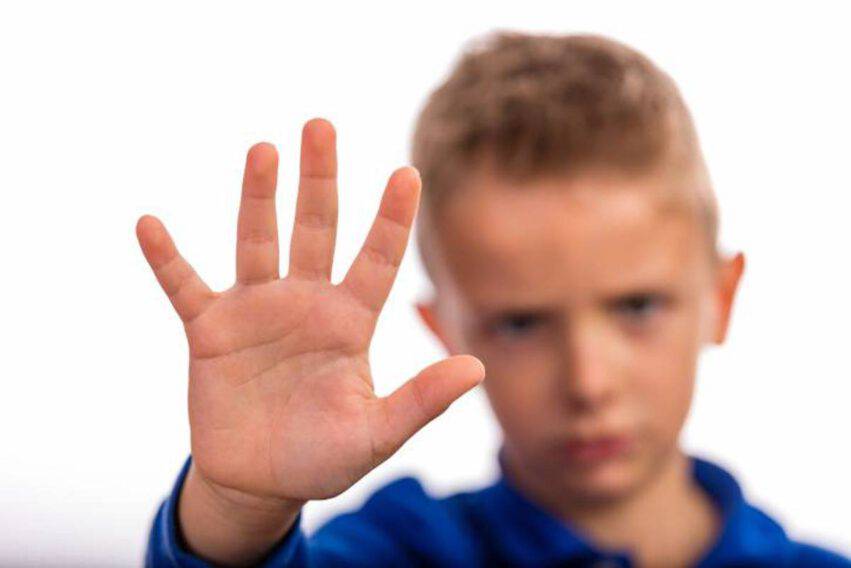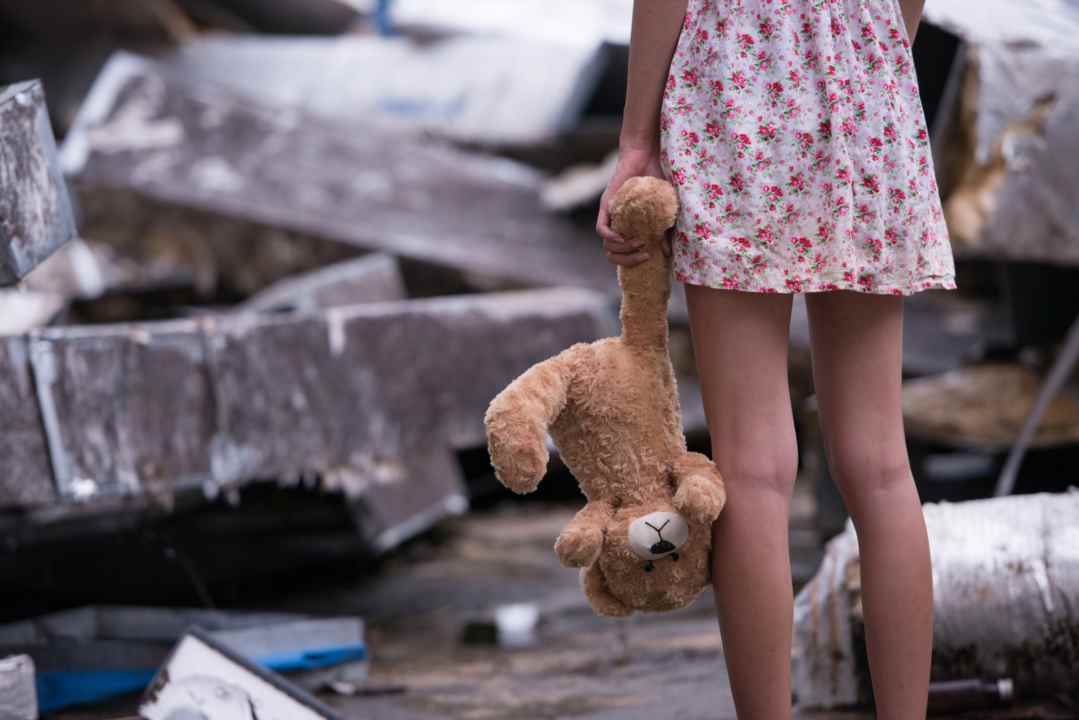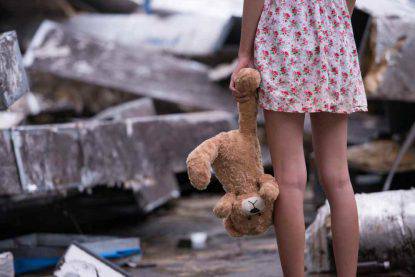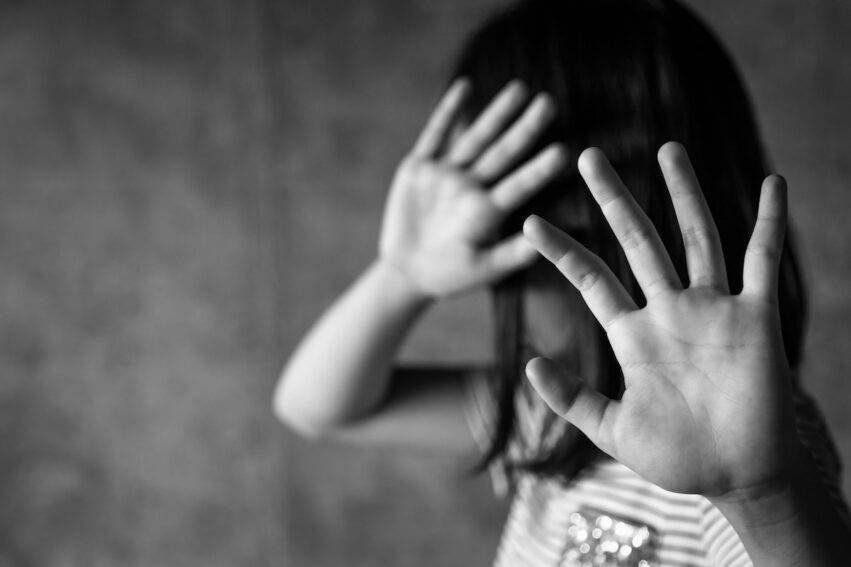
One of the greatest fears of parents is that children may be victims of sexual abuse. For this reason it is necessary to teach our children an important rule.
 Un in five children are victims of various forms of sexual abuse or violence. There are no differences, it can happen to children of both sexes, of any age, regardless of skin color, social class and religion.
Un in five children are victims of various forms of sexual abuse or violence. There are no differences, it can happen to children of both sexes, of any age, regardless of skin color, social class and religion.
READ ALSO -> CURIOUS SCENES WITH BABIES VICTIMS OF FOOTWEAR: MAXI OPERATION ALL OVER ITALY
Often the abuser is someone the child knows and trusts, but the abuser can also be another child.
Sexual abuse of children: how to prevent them with the Underwear rule


Is it possible to make sure that this does not happen? It is essential to establish good communication with children. It implies openness, determination, frankness and a friendly and non-intimidating family atmosphere.
A rule, called the “Underwear rule” and the “Kiko’s fable”Can help in this regard. This is a guide created by the Council of Europe to prevent sexual violence against children. A simple tool that helps mothers and fathers that has been designed to help parents and those involved in childhood to start a dialogue with children on the subject and which can turn out to be a effective means of preventing sexual abuse.
READ ALSO -> INSTAGRAM, TIK TOK AND THE OTHER CHATS WHERE PEDOPHILES HIDE
The 5 important aspects of “Underwear rule“
Mainly aimed at children aged 3-7 years, the “Underwear Rule” is simple and also helps to teach your child that his body belongs to him, that there are good secrets and bad secrets, and ways of having good physical contacts and bad ways, thus preventing potential sexual abuse.
Here are the 5 most important aspects of the “rule” explained by European Council:
1- Your body belongs to you: Children should be taught that they are masters of their body and that no one can touch it without their permission. An open and direct dialogue from an early age on sexuality and “private parts ”, using the correct names for the genitals and other parts of the body, will help children understand what not to do. Children have the right to refuse a kiss or to be touched, even by a person they love. Children must be taught to say “No”, immediately and firmly, to inappropriate physical contact, to escape from risky situations and to talk to a trusted adult. It is important to make them understand that they must insist as long as the problem is taken seriously.
2- There is a good way of touching and a bad way of touching: children do not always recognize whether a groping is appropriate or not. Explain to the children that it is not okay to allow someone to look at or touch their private parts, or to agree to look at or touch someone else’s private parts. The Underwear Rule helps them recognize an obvious and easy to remember limitation: underwear. It also helps adults to engage in dialogue with children about this. If children are unsure whether a person’s behavior is acceptable, make sure they can seek help from a trusted adult.
3 – There are good secrets and bad secrets: secrecy is the primary tactic used by sexual abusers. This is why it is important to teach the difference between good secrets and bad secrets and create a climate of trust. Any secret that makes them anxious, uncomfortable, scary, or sad is not a good secret and should not be kept.; it must be told to a trusted adult (parent, teacher, policeman, doctor).
4- The responsibility for prevention and protection lies with an adult: abused children feel shame, guilt and fear. Adults must try to avoid creating taboos around sexuality and make sure children know where to turn if they are worried, anxious, or sad. Children may feel that something is wrong. It is up to adults to be attentive and understand their feelings and behaviors. There may be reasons why a child refuses contact with another adult or another child. This desire should be respected. Children should always feel that they can freely talk to their parents about this topic.
5. Teaching to report and reveal: si must indicate to children that certain adults can be part of their circle of trusted people who create a safety net to protect them. We should encourage them to choose adults who have the ability to inspire confidence, are willing to listen and help them. Only one member of the safety net should live with the child; the other should live outside the close family circle. Children need to know how to ask for help from this network of affection and trust. It is also important to teach them how ask for help informing them that
there are professionals who can assist them (teachers, social workers, ombudsmen, doctors, school psychologists, police) and that there are special telephone lines to which children can ask for advice and help.
In most cases, the perpetrator is someone known to the child. It is particularly difficult for young children to understand how it is possible for someone who knows them to abuse them. Let’s not forget the “grooming” web baiting used by potential abusers to win the trust of children. Among the rules established in the family, there must be that of regularly informing parents if there is someone who offers gifts, asks to keep secrets or tries to spend time alone with a child.
In some cases, however, the perpetrator of the abuse is an unknown. Teaching children simple rules for contact with strangers is essential:
- never get in a car with someone you don’t know,
- never accept gifts or invitations from a stranger.
From these passages it is clear how much it is It is important to establish good communication with children. That’s why explain to them the Underwear Rule, shown above Council of Europe can help parents in this regard.
READ ALSO -> 40% OF PEDOPHILIA VICTIMS ARE UNDER 10 YEARS OLD
Dear Unimamme, we therefore advise you to download the pdf of Kiko’s story, the book made available online just from the Council of Europe and that parents and those caring for children can use to explain to children that they can say “No” at any time.

Finally let us try not to be afraid, penis and vagina are private parts and should be taught to children. If you feel uncomfortable talking about this topic with your children, think that it is probably more difficult for you as an adult than it is for a child. Will you follow this advice?
To stay up to date on news, research and much more, keep following us on GoogleNews.
